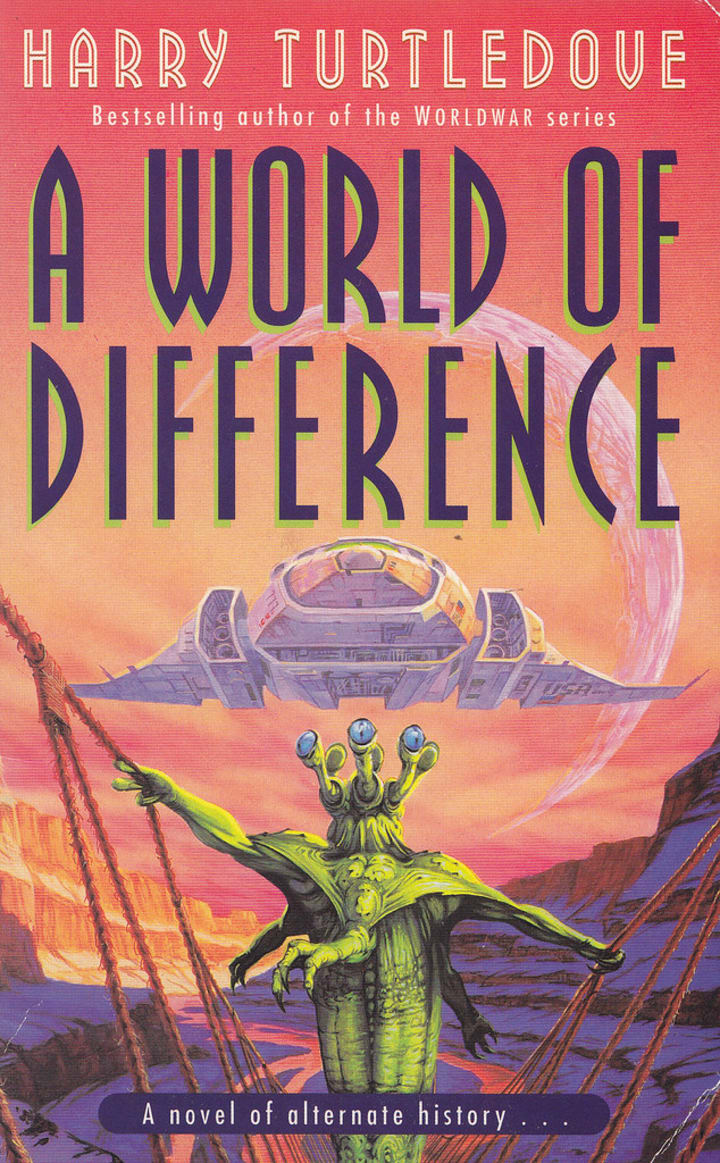The Implausibility of Popular Sci-Fi Aliens - Part Three
The interesting and *sometimes* plausible aliens from less mainstream Sci-Fi
Communicating and interacting in any meaningful way with a truly alien species might prove extremely difficult, and perhaps impossible. In this concluding part of the trilogy, we will investigate some of the truly alien species and civilisations depicted in less mainstream sci-fi, and discuss the difficulties we might have communicating and interacting with them.
To find examples of aliens and their civilisations that are either scientifically plausible or at least interesting, we will need to look towards less mainstream sci-fi. Usually, this means books, and in some cases, independent films and video games.
Communication
We communicate mostly via voice. However, this may not be true for all sentient species. Some may communicate in very different ways, such as pheromones. Indeed, it is not even guaranteed that an alien species will be able to hear the frequencies we speak at, whilst some might not be able to hear anything at all. Even if they do communicate via vocalisations, their "language" may use very different principles, as this recent TED talk explains:
Two examples of non-auditory communication are the Octospiders from Arthur C. Clarke’s Rendezvous with Rama series and the Shivans from FreeSpace. The Octospiders communicate via changing the colours of their skin, much like cephalopods on earth. One of them, which the humans name "Dr. Blue" due to the blue flashes that ripple across its body when it talks, is revealed to have the Octospider equivalent of a speech impediment.
An alien species may communicate in ways we cannot even detect unaided. The Shivans from FreeSpace communicate via broadcasting modulated quantum pulses, which humans can only detect via technological means. The effects of these are said to exhibit both nonlocal and accusative properties, which would make comprehending them all the more difficult.
The floating gas bag creatures from Arthur C. Clarke’s 2010: Odyssey Two communicate across the skies of their native Jupiter via biologically generated radio waves. (At least until the makers of the monolith turned Jupiter into a star that is).
Perception—Vision
An alien species may perceive the world very differently from how we do. Their vision may be different, with different fields of view, light sensitivities, colour perception etc. Some may perceive wavelengths invisible to a human’s naked eye, such as infrared, ultra violet, or polarised light. Conversely, some species might be unable to perceive what we can. For example, many mammals cannot perceive colour as well as we do.
The likelihood of an alien species possessing vision of some sort is probably fairly high considering how useful vision is. On earth, eyes have evolved independently multiple times across multiple Phyla, and they are all quite different from one another, as you can see below.

And these are just the ones that exist now.
Perception—6th Sense
An alien species may even possess senses that we do not. Examples of sixth senses found in nature include the heat-sensing pits of pit vipers, the sensitivity to magnetic fields of migratory birds, and the electricity detecting "Ampullae de Lorenzini" of sharks. An alien species may possess something similar, or even something for which there is no earth analogue.
Perception—Sensory Processing
It is well known that the raw sensory data our senses detect and what we then perceive with them are two different things entirely. This is mostly due to how our brains process this sensory data.
How an alien species processes their sensory data may also vary considerably from our own. Abilities such as synesthesia, and afflictions such as blindsight, show just how divergent from reality our perception of the world can get. An alien’s perception might be stranger still.
A species senses’ can also affect how that species perceives time. It is thought that flies perceive time in "slow mo," which is why it is so hard to swat them. Even our fastest reflexes look glacial to them. Realtime communication with an alien that perceives time very differently may be extremely difficult.
A very interesting example of this were the Heptapods from Arrival. Their perception of time was circular, not linear, and their language reflected this. Fully understanding them proved to be a significant challenge and the central theme of the film. Arrival did an admirable job of depicting a truly alien species in other ways, too. The Heptapods had to remain behind a partition to remain in their own atmosphere since ours was presumably toxic to them. Their body plan was utterly unlike our own and was also far larger, which was an interesting idea.
You have probably noticed that most popular sci-fi aliens are of a similar size to ourselves. In reality, this may not be the case, as some could be considerably larger than ourselves whilst some might significantly smaller. As an example, "The Race" from the World War series are said to be about the size of a child. Would a large difference in size between humans and a hypothetical alien race affect how we interacted with each other or perceived each other's worth? (We tend to think of organisms that are far smaller than ourselves as being less important than those that are closer to our size or larger.)
Cognition
It is also possible that an alien species' cognition, i.e. "how they think," could be very different from ours too, as too their level of consciousness. The Scramblers from Blindsight and the Shivans from FreeSpace's Blue Planet are depicted as having immense sensory and computational power, but almost zero consciousness; arguing that consciousness may, in fact, be a hindrance.

Above, a Shivan from FreeSpace; below, a Scrambler from Blindsight. Both possess the computational power of supercomputers, but both are as dumb as sticks since neither possess self-awareness.

Emotions
An alien’s emotions may be markedly different from our own. Some may lack some of the emotions we do. We see this already with sociopaths, who lack empathy.
The level to which an alien species experiences emotions may also vary. For example, some species, such as the Thargoids from Elite Dangerous may be extremely territorial, whereas some might be less so than ourselves. It is even possible that an alien species may possess emotions for which there is no human analogue. Fully understanding such a species may prove impossible.
The Thargoids concept of territory and ownership is quite alien to us. The Thargoids see any territory they have had even the slightest interaction with as being theirs, even if that brief interaction was eons ago. This is presumably the reason for their hostility in Elite Dangerous. By expanding into vacant systems, we inadvertently trespassed onto territory they still laid claim to. The fact they did not leave anything behind to warn other races that said territory was taken, and have made no discernible attempt to communicate with humanity now, shows just how alien their cognition is.
Worldview, Culture, and Society
A radically different biology may result in radically different world views and perceptions. The radially symmetrical Minervans from Harry Turtledove’s A World of Difference had no concept of a "front" and "back" until they encountered humans with our bi-lateral symmetry.

A species lifespan may also have an effect on their society. For example, a short-lived species may have difficulty creating or sticking to long-term plans, especially if the plan’s lead-time lasts longer than a generation or two. Conversely, a very long-lived species may be more capable of long-term planning than we are.
An alien civilisation may subvert some of our assumptions. The titular Predator is an example of this. The Yautja species is clearly more technologically advanced than even the most advanced human civilisation, yet their culture is barbaric and savage. This ably undermines our assumption that an advanced species must also be what we would consider "civilised."

How They View Us
Something that popular sci-fi rarely addresses is how alien and incomprehensible a truly alien species might find us. The Minervans could not comprehend our bilateral symmetry, as they had no frame of reference for it, since all life on Minerva was radial.
The short story Things by Peter Watts describes the events of the 1982 movie The Thing, but from the thing’s perspective. In its experience, all life was as plastic and malleable as it was. It had difficulty comprehending our biology, with its specific and immutable organs. It mistook our brains for tumours until it learned the truth of how our biology works, and it found this revelation startling, repellent, and truly "Alien."
This was only a brief overview of some of the more intriguing aliens is sci-fi, there are many other fine examples. Which alien biologies and civilisations have you found interesting over the years?
In case you missed them, links to the first and second parts of this series can be found below:
About the Creator
Iain Baker
A 'pushing 40' life long gamer, reader, writer, film buff and amateur war historian. Loud and proud member of the 'The Oregon Trail Generation - the first gamer generation.'






Comments
There are no comments for this story
Be the first to respond and start the conversation.